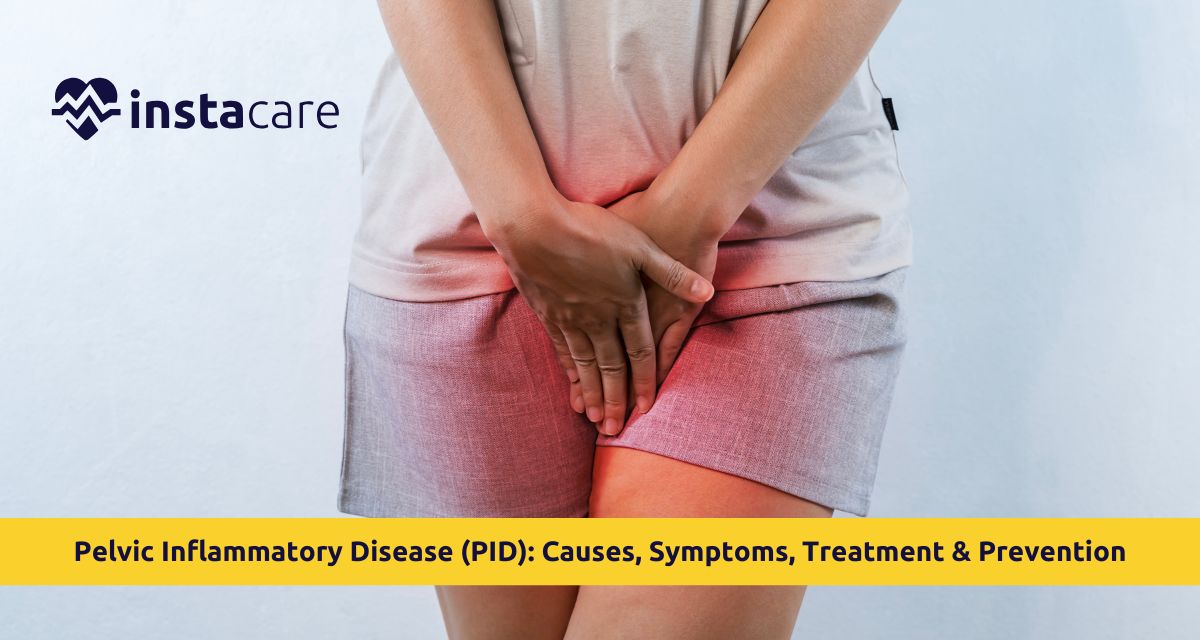Pelvic Inflammatory Disease (PID) is a non-gonococcal chronic disease that infects the female genital tract, i.e., ovary, fallopian tube, and uterus. Bacterial infection, which is the most common causative agent of PID, is the overall cause of PID, but in rare circumstances other bacteria also induce PID with specific conditions. PID, if it is not treated, results in long-term consequences like infertility, ectopic pregnancy, and pelvic pain.
Data on what is PID?, its cause, symptoms, and possible complications need to be gathered to make an early diagnosis and treatment. Early treatment prevents permanent damage to the reproductive system. This article is a complete guide on pelvic inflammatory disease cause, PID symptoms, diagnosis, treatment, prevention, and untreated PID complications on women's health.
Causes of Pelvic Inflammatory Disease
Causes of pelvic inflammatory disease are mostly a result of bacterial infection that has been transmitted from the vagina or cervix to the upper genital tract. PID starts as a sexually transmitted infection like
gonorrhea or chlamydia. Bacteria are in latent form initially, i.e., infection is not symptomatic until bacteria multiply.
Non-sexually transmissible causes also induce PID, however. At delivery, miscarriage, abortion, or insertion of the IUD, bacteria can invade the reproductive tract. Non-sexually transmissible risk factors for PID heighten vulnerability, particularly in sexually experienced young women.
Sexually transmitted infections and PID are closely associated. Those who have more than one partner or whose sexual activity is not included are very susceptible. Early PID diagnosis and treatment of PID's cause eliminate the risk for future reproductive loss.
Symptoms of PID
PID can be mild on some days, severe on other days, and not at all present on other days. Such a "silent" disease is hard to diagnose unless follow-up visits are kept on a regular schedule. When it does appear, it is:
- Recurrent pelvic or lower abdominal pain
- Abnormal and malodorous vaginal discharge
- Mittelschmerz-like dyspareunia
- Fever and chills
- Irregular menstrual cycles
- Burning or painful urination
The most prevalent prodromal symptom is female pelvic pain and should never be missed, particularly on the background of fever or discharge. In more definite cases, the symptoms will occur in close succession and indicate acute PID, always able to be treated as such.
Data on PID symptoms in their early period are crucial to enable the early diagnosis. All or at least the majority of the symptoms mentioned earlier in women should be taken in for early examination so that fertility issues or formation of abscesses does not take place.
Diagnosis of Pelvic Inflammatory Disease
PID is diagnosed by excellent clinical assessment and a few investigations in the laboratory. PID is not diagnosed as such, but doctors use a set of signs, history, and tests in combination. Some of them are:
- Pelvic examination swelling and tenderness
- Diagnosis by swab test for Chlamydia and gonorrhea
- Urinalysis and blood test for detection of markers of infection
- Ultrasound scan for observation of in-office reproductive organs
- Laparoscopy in complex and complicated cases
Delayed diagnosis of PID for a long time results in a chronic pelvic inflammatory disease, which generates recurring symptoms and permanent damage. Correct diagnosis at the right time distinguishes PID from endometriosis, a disease of similar type of symptoms but not of the same type of treatment.
Treatment Options for Pelvic Inflammatory Disease
If PID is diagnosed subsequent to therapy, therapy can be started without the extra hassle. PID can be cured with antibiotics. A combination of an antibiotic for PID is essentially sucked up in an attempt to attack a wide range of bacteria and STI-causing bacteria. Doxycycline, metronidazole, and ceftriaxone are some of the usual PID antibiotics.
- PID treatment is about delivering antibiotics early, even before feedback is given on
- The lab
- Completion of all the PID antibiotic dose in spite of improvement
- Prevention of sexual intercourse until treatment is finished,
- Treatment and screening of sex partners for prevention of reinfection,
Hospitalization in acute PID is occasionally required for intravenous antibiotics or surgery to drain more severe illness or complications (e.g., abscess). PID not treated with antibiotics, typically results in PID and fallopian tube scarring and
infertility.
Treatment of PID is not only eradication of existing infection but is not also becoming chronic pelvic inflammatory disease, which causes long-term pain and infertility.
Avoiding Pelvic Inflammatory Disease
Prevention of PID begins with condomed sex and regular check-ups. Enhanced PID prevention guidance is as follows:
- Always have condom sex
- Take regular STI tests, particularly if you are having a number of sexual partners
- Never douche because it prevents normal vaginal bacteria
- Have few sexual partners
- Screen and treat sexual contacts also if infected
As PID and STI are the causative factors of the vast majority of PID, prevention involves prevention of exposure to STI. Any history of past STIs or past PID must imply that women should be very cautious. Identification of risk factors for PID and prudent practice of preventive measures can significantly minimize the incidence and severity of this illness.
If left untreated, how PID affects fertility is a legitimate question. The fallopian tubes can be rendered infertile or result in ectopic pregnancy. Prevention of PID, therefore, is not prevention of infection; it's guarding against your future reproductive health.
Conclusion
Pelvic Inflammatory Disease is a complex but avoidable disease that can inflict irreversible damage in case it cannot prompt action at the right time. What is PID?, etiology awareness of the pelvic inflammatory disease, awareness of the symptoms or signs, and PID treatment at an early stage could be the key to maintaining reproductive well-being.
Prevention of safe sex measures, STI screening, and prevention of PID risk factors also prevent the disease. Early identification and treatment always best protect women with PID and infertility problems. Even with the presence of those combining PID with endometriosis, there is only one method through which the true cause of women's pelvic pain can be determined, and that is medical diagnosis. Prevention, symptom management, and wellness practices can reduce the rate of acute PID and its complications.
Please book an appointment with the
Best Gynecologist in Lahore, Karachi, Islamabad, and all major cities of Pakistan through
InstaCare, or call our helpline at 03171777509 to find a verified doctor for your disease.

